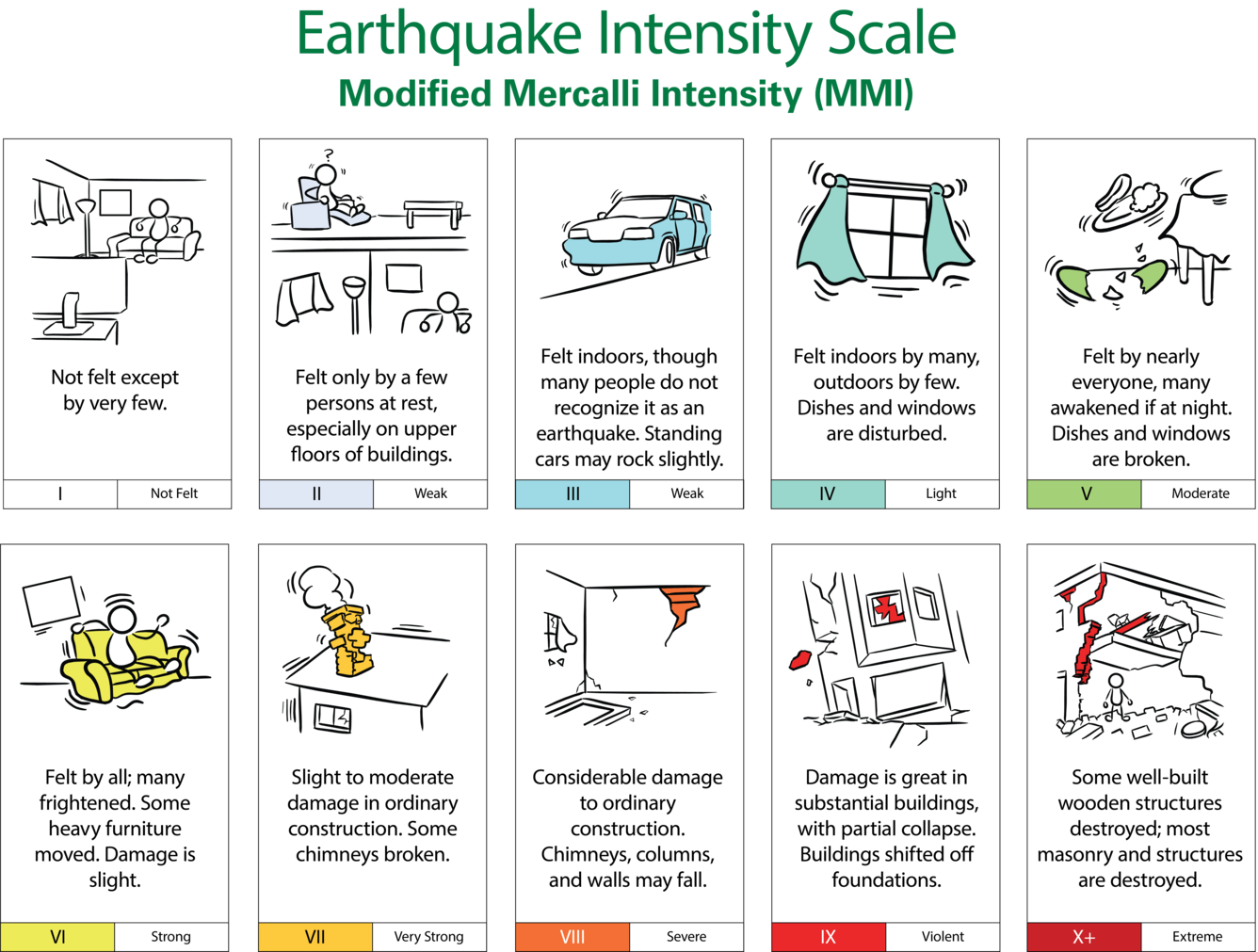Earthquake
Hazard Description

An earthquake is a sudden motion or trembling of the ground caused by shifting tectonic plates. Earthquakes occur very abruptly, with little or no warning time. The duration of earthquakes ranges from a few seconds to a few minutes. Aftershocks can recur over hours, weeks, or months, usually with diminishing frequency and intensity. The State of Nevada is the third most seismically active state in the United States, and Washoe County is located in one of the most seismically active areas in Nevada. Overall, any area of the County is susceptible to noticeable effects of earthquakes.
See the history of earthquakes in Nevada here.
Impact
Earthquakes are potentially catastrophic, capable of causing multiple fatalities and major structural and infrastructure damage, including disruption of utilities, communications, and transportation systems. Secondary effects can include landslides, searches, liquefaction, fires, and dam failure. Earthquakes have the potential to cause significant, widespread structural damage throughout the region. The severity and duration of these impacts would depend on the severity of the earthquake and damage to infrastructure and buildings across the region.
Mitigation
Building codes adopted by Washoe County require all development to meet building standards based on seismic zone. The currently adopted codes are the 2018 International Building Code and the 2018 International Residential Code, with the Northern Nevada Amendment package.
To learn more about Earthquakes, visit the Nevada Seismology Laboratory website here.
Preparedness
The Great Nevada ShakeOut
The Great Nevada ShakeOut is an annual opportunity to practice how to be safer during big earthquakes: " Drop, Cover and Hold On ." The ShakeOut has also been organized to encourage you, your community, your school, or your organization to review and update emergency preparedness plans and supplies, and to secure your space in order to prevent damage and injuries. To learn more about the Great Nevada ShakeOut, click here.

Sign-up for Alerts
Citizens can register for emergency alerts. To sign up, click on the “ Rave Alert” link and follow the instructions.
ShakeAlert
The ShakeAlert® Earthquake Early Warning system, operated, by the U.S. Geological Survey (USGS), quickly detects significant earthquakes, estimates shaking, and issues ShakeAlert Messages to Technical Partners. Then, Technical Partners, which have entered into a license agreement with the USGS, use this information to deliver alerts that rapidly reach people and trigger automated actions to protect vital systems and infrastructure, potentially seconds before shaking arrives at their location.
The ShakeAlert Earthquake Early Warning system only issues a ShakeAlert Message if certain thresholds in magnitude and intensity are met. The goal is to alert people and systems for weak or greater shaking.
What is the difference between earthquake magnitude and intensity?
Magnitude and intensity each measure different aspects of an earthquake. Magnitude measures the amount of energy released from an earthquake. Magnitude is expressed in whole numbers and decimal fractions. For example, an M5.0 is considered a moderate earthquake, and an M6.0 is a strong earthquake. As an estimate of energy, each whole number step in the magnitude scale represents about 32 times more energy released. Consider that M7.0 earthquake releases ~32 times the energy of an M6.0 earthquake and 1,000 times the energy of an M5.0 earthquake.
Intensity is what people feel as the seismic waves travel across the surface of the Earth. Your location relative to the earthquake is the main factor that determines the level of shaking you will experience. The type of rock and soil beneath you can also affect the shaking intensity; valleys and unconsolidated sediments tend to amplify shaking.
What is the Modified Mercalli Intensity Scale?
The Modified Mercalli Intensity (MMI) Scale is composed of increasing levels of intensity that range from imperceptible shaking to catastrophic destruction; levels of intensity are designated by Roman numerals. The MMI Scale does not have a mathematical basis; instead, it is a holistic ranking based on observed effects. The lower range of the MMI scale generally deals with the manner in which the earthquake is felt by people. The higher range considers observed structural damage.
How do magnitude and intensity affect whether you will receive a ShakeAlert-powered alert?
End-users receive ShakeAlert-powered alerts only if certain thresholds for magnitude and shaking intensity are met, as identified below. The ShakeAlert system only issues a ShakeAlert Message if the earthquake is expected to produce weak or greater shaking that can potentially cause damage. It is important to note that not all Technical Partner delivery methods have the same alerting thresholds and may not all activate for a given earthquake.

